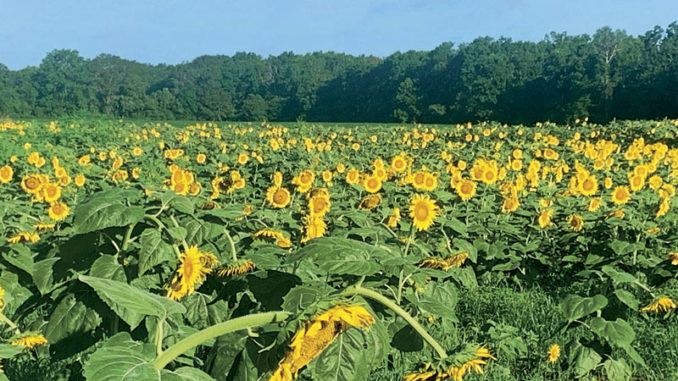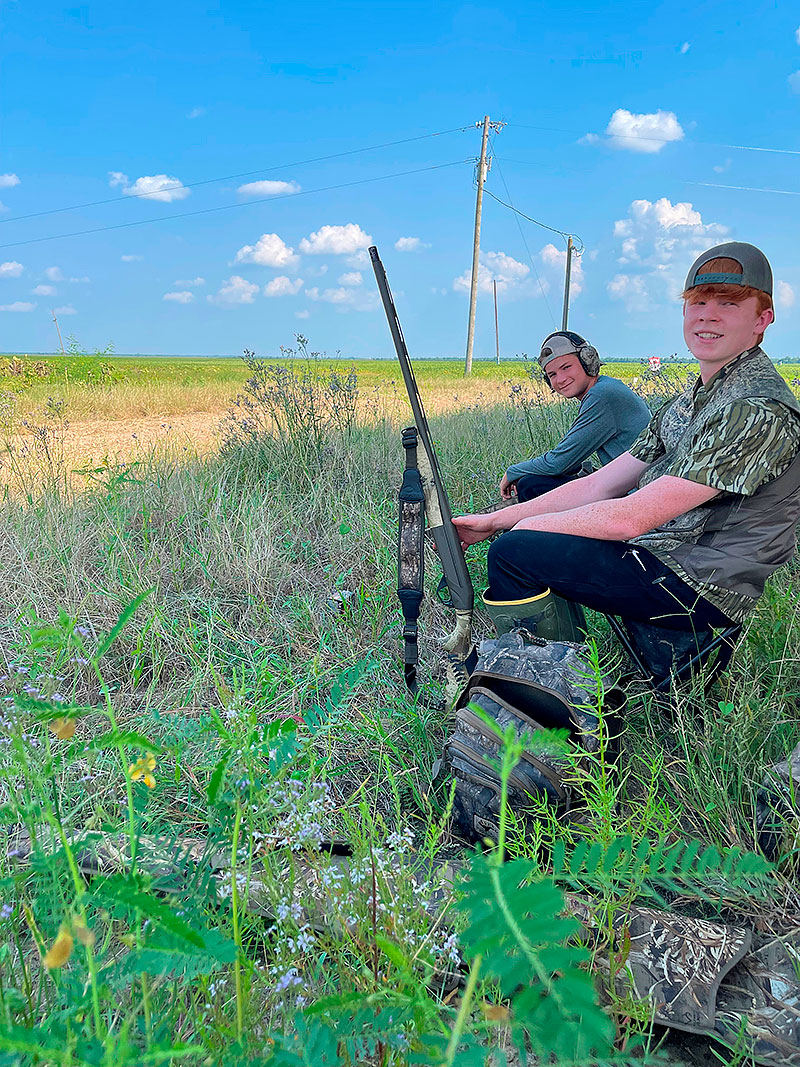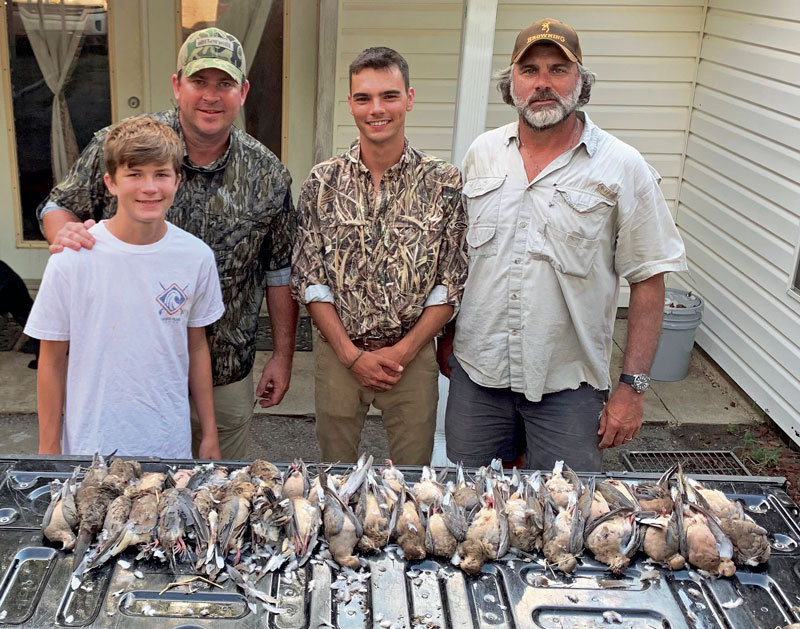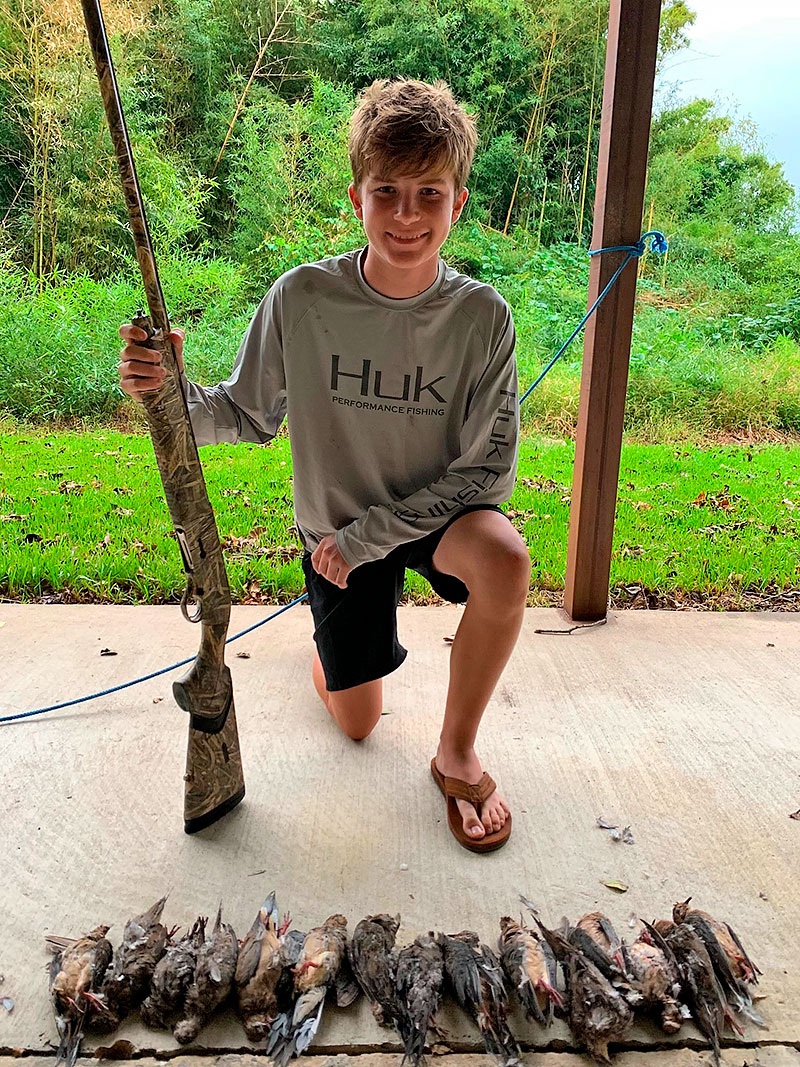
Field prep, scouting, paperwork….now’s the time to get it ready
The summertime heat is at its peak and most hunters prefer to be on the water chasing fish, rather than in the field preparing for a hunt. But hunting season is just around the corner.
Next month, the official start of hunting season begins. It all kicks-off with the opening of dove season on Labor Day weekend.
With a month until go time, procrastinating hunters can use August to finally get their ducks in a row. Drew Mire and Blake LeMaire, both live in New Orleans and are avid bird hunters. They typically hunt the Jonesville area, which has thousands of acres of agricultural fields like corn, soybeans and milo that attracts all types of migratory birds.
By August, they’re not just getting started. They are putting the finishing touches on field preparation.

Field of sunshine
Among the most popular and productive ways to hunt doves is over agricultural fields.
“We hunt on several fields that are a mix of milo and sunflower,” LeMaire said. “They’re maybe 5-10 acres a piece.”
Planting of sunflower, milo and millet typically being in late April to early May depending on the desired date for the crop to mature. These plants start heading out with visible new grain in June. By mid to late August the new seeds are mature, and plants have begun to wither up.
Once dry, seeds are disbursed every time the wind blows, but mowing is probably the easiest farming practice to expose new seeds. Doves are ground feeders and generally prefer foraging for seeds on open ground. Well managed agriculture fields are a quick attractant to local dove populations. Make sure you follow all laws and regulations pertaining to field preparation to avoid “baiting” problems.
“The birds we’re gonna hunt on opening weekend are local birds who stay on the farm,” LeMaire said. “As the fronts start to push in, we’ll see new birds. The second split in October and the third split in December we’re getting the migratory doves.”
Plan B
If a planted ag field isn’t an option, natural hayfields are a good backup. Louisiana’s native vegetation also provides good food sources that attract doves. Natural hay fields may contain barnyard grass, crabgrass and goat weed. Mowing these types of grass fields eliminates competing vegetation, reduces the ground cover and scatters the natural seed product.
Another option common in south Louisiana is hunting in the rice fields. Doves avoid feeding in thick cover. But after the rice is cut, seeds are more readily available and these cut fields can attract good numbers of dove.
“We usually shoot 99% Mourning Doves in Jonesville, but in the rice we’ll see a few of the Eurasian Collared Doves in there too,” LeMaire said.
For those hunters without access to planted property or even a dove lease, the Louisiana Wildlife and Fisheries (LDWF) has options as well. There are over a dozen locations across our state where the LDWF manages and manipulates agricultural field specifically for attracting doves for hunters. Hunters should review the details and specific locations. This information can be found at: https://www.wlf.louisiana.gov/page/dove-fields.

Be prepared
A pre-hunt scouting effort is a necessity. Scouting is just as effective for finding doves as it is for other types of hunting, like taking deer. To make the most out of a hunt, hunters would be wise to take at least one morning or evening visit to the field. Having 10-acre plots of sunflowers give the doves plenty of routes for coming and going. Mire and crew will go out a few evenings before to get a sense of what the birds will actually be doing when the season starts.
“We like to hunt along anything that has created a change in the terrain,” Mire said. “The edges of two different fields, tree lines, wire crossings; anything that breaks up a continuous field. These landmarks will tend to move the birds in a more predictable flyway.”
Since most of the doves bagged in September are from Louisiana’s resident population, the birds can get burned out on a spot.
“We’ll move around a good bit,” Mire said. “We don’t typically hunt the exact spot back-to-back. Sometimes the weather moves the birds around, too. If we aren’t on them, we’ll walk in the field while we’re hunting to get better lined up.”
In addition to scouting, shooting is probably the key ingredient to an enjoyable dove hunt. A lot of duck hunters use dove season to knock the rust off, and this is the last month to do exactly that. Like a lot of duck hunters, Mire confessed, “I haven’t taken my gun out of the case since my last duck hunt last January.”

Now’s the time to go through and make sure everything is in working order on your trusted shotgun. Make sure the plug is in the gun. Clean it, lubricate it, and have it pretty for the opener. And it is also wise to shoot a round of skeet to bring back that shooting eye.
Permits, licenses
If last year’s hunting season was the last time you paid attention to permitting details, don’t forget to renew that hunting license. Hunters will also need to complete the free Harvest Information Program (HIP) certification. HIP certification is required whenever hunting migratory birds.
Dove season has different dates for each hunting zone (North and South Zones). There are also regulations related to lottery access, hunting days, times and type of bird shot allowed on the different WMA’s and public dove fields. Be sure to review the LDWF for all of these details: https://www.wlf.louisiana.gov/subhome/dove
One important “not to do.” While its legal to produce agricultural crops for dove hunting, it is not legal to add any kind of supplemental feed or seed to ag fields. This even includes any seed that may have actually been grown and harvested in the field hunters plan on using.
Whether doves are your top target for the season or just a preseason warmup hunt, take advantage of the time remaining. Get the paperwork out of the way, make sure the shotgun’s primed and do a little scouting.
Once all that’s done, as LeMaire said, “We ready to hunt’m!”
Shoot’m up.


